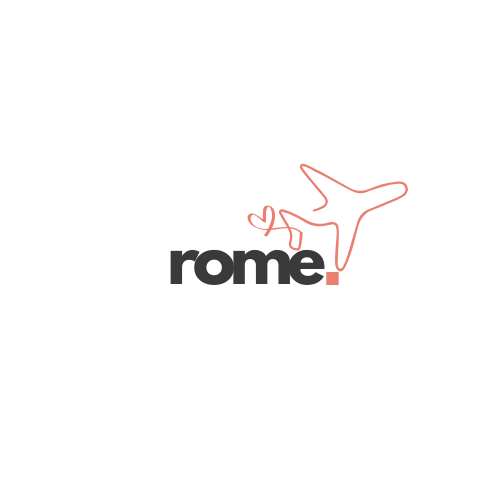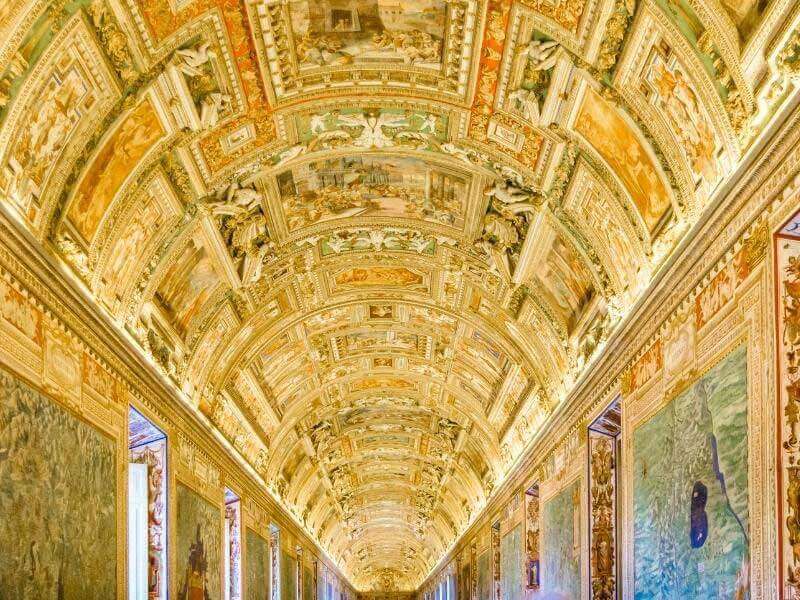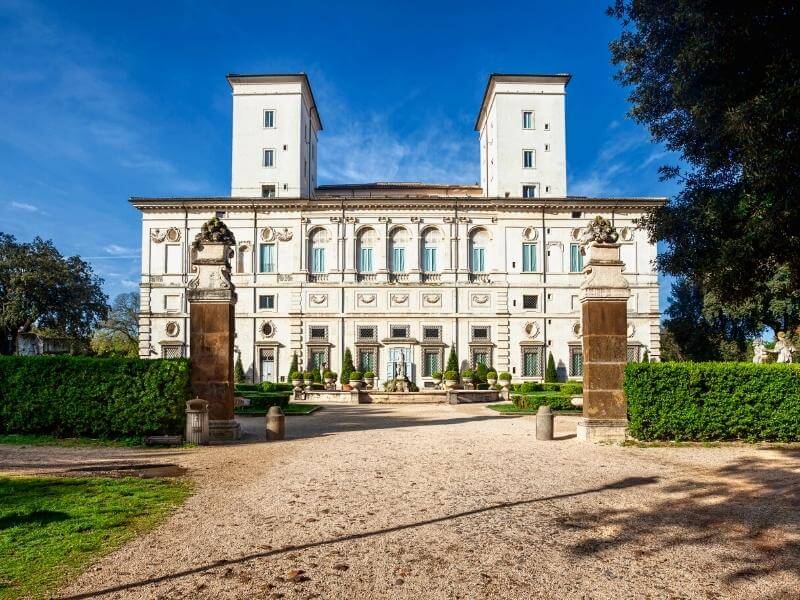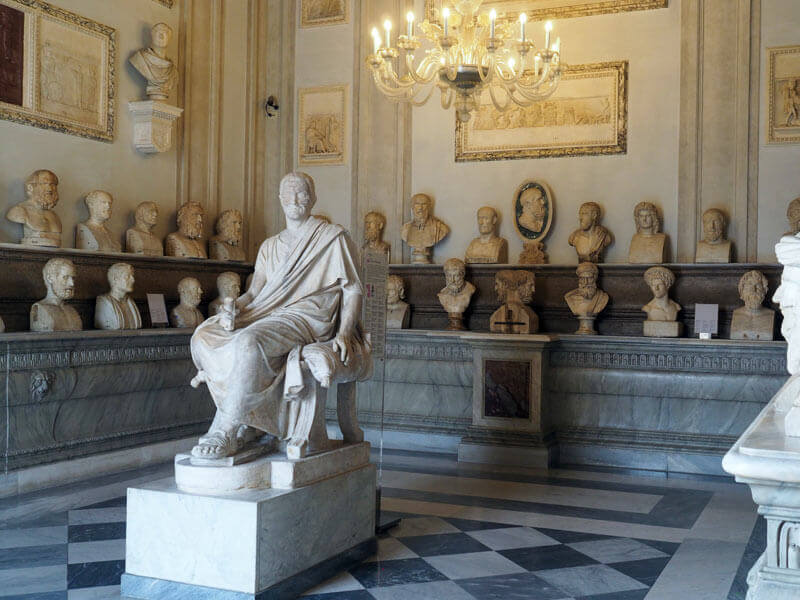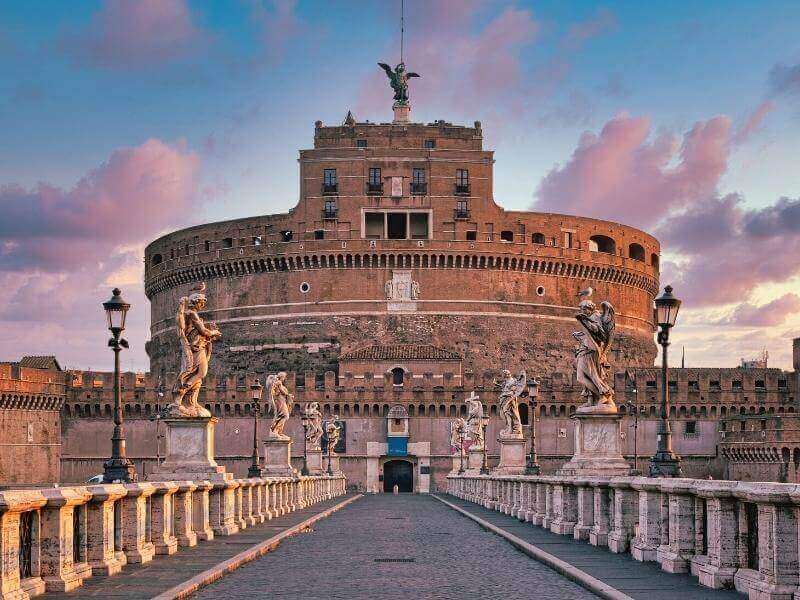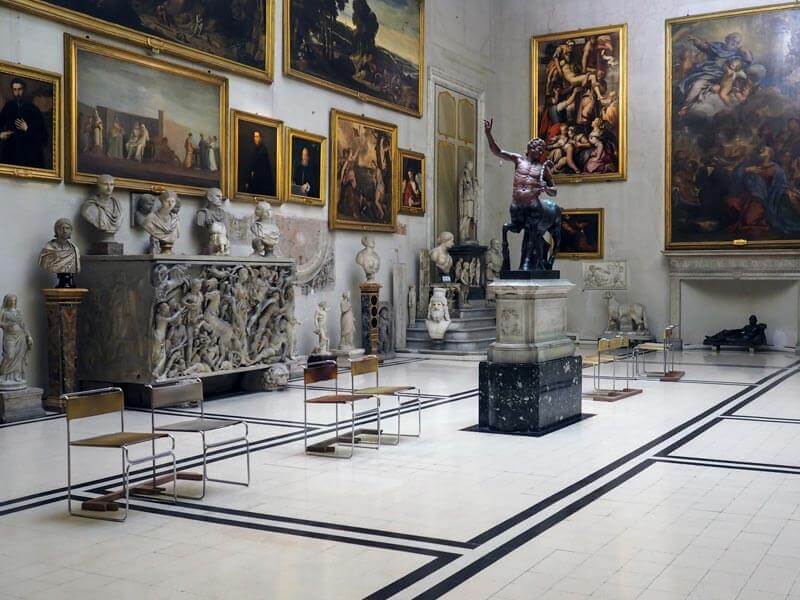15 Best Museums in Rome - Tips, Tickets & Opening Hours
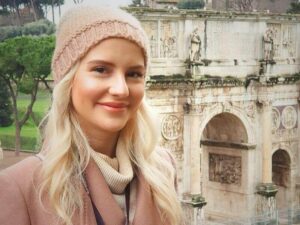
- - Updated on
Rome, the “Eternal City” was once the hub of the Roman Empire and has been the center of the Catholic Church for hundreds of years.
Visitors embark on an exciting journey through the city’s 3,000-year history. But what are the best museums in Rome?
The largest and most popular open-air museums in Rome are the Colosseum and the Roman Forum. In addition to the millennia-old monuments, fountains, and churches, Italy’s capital has more than 150 different museums.
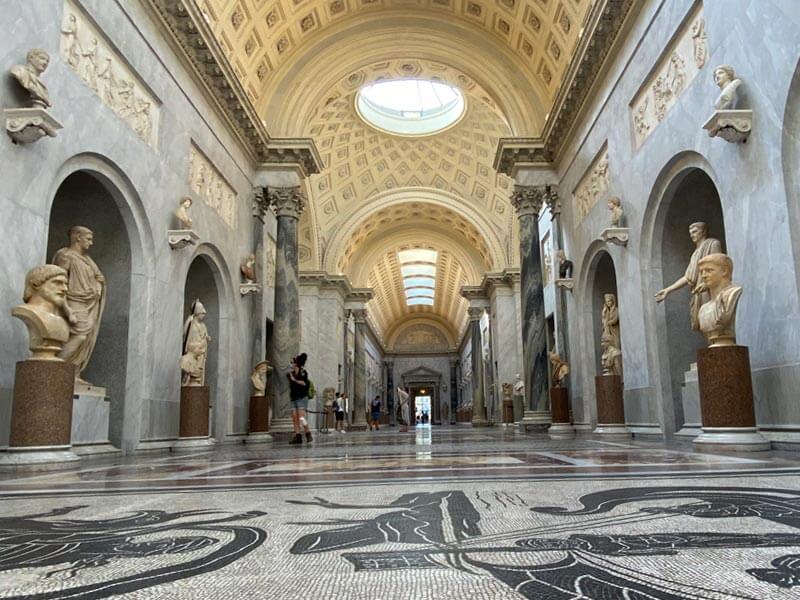
Some museums focus on relics of antiquity, while others are dedicated to modern art. In this article, we present the best museums in Rome.
You will also learn everything you need about admission and opening times. Tickets can be purchased directly via our website.
Author
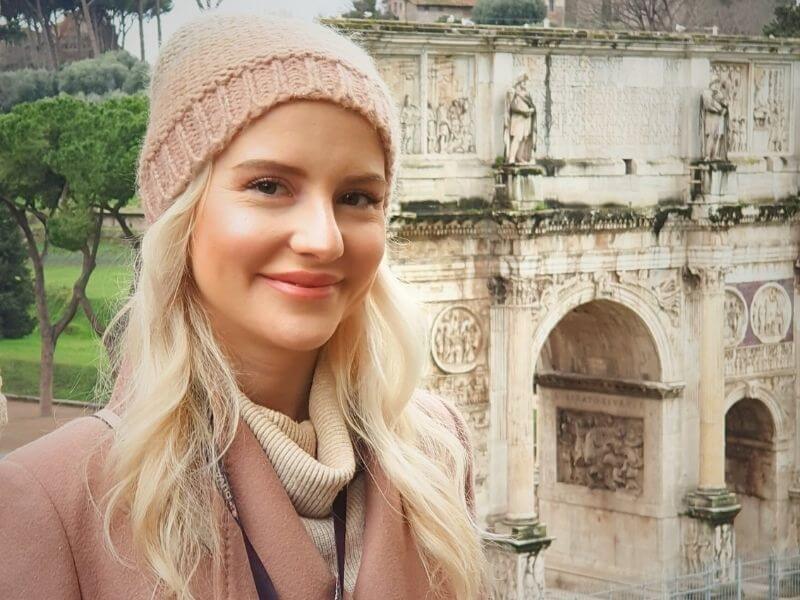
Who’s writing here?
Hi there, fellow adventurers!
I’m Allie and I travel to Rome a lot! ♥️
Allie
Vatican Museums
The Vatican Museums are by far the most famous and interesting in Rome. Even if you visit in three days and thus spend much of your time in the historic center, you should definitely take 3 to 4 hours to see the papal art collections.
Divided into over 1,300 rooms and 54 halls, a 7-kilometer-long museum area awaits you, with countless Roman sculptures, paintings, and other valuable works of art.
In addition to Raffel’s famous stanzas, the incredible art collection contains a wealth of oriental antiquities, early Christian and medieval art objects, and art treasures from antiquity and the Renaissance.
One of the absolute highlights of the Vatican Museums is the Sistine Chapel. The construction of the famous chapel was commissioned in 1473 and includes Michelangelo’s ceiling fresco. It took the Italian painter, sculptor, and poet four years to paint the ceiling alone.
Important:
Tickets for the Vatican Museums sell out quickly during peak season. Our tip: reserve your tickets at least 1-2 weeks in advance.
Get Tickets (incl. Sistine Chapel)
Address:
Città del Vaticano 51, 00120 Vatican City
Opening hours:
Monday – Saturday: 8:30 am – 6:30 pm (last admission: 4:30 pm)
Fridays open until 21:00
Sundays: closed
Our tip: Save money with a Rome City Pass!

Borghese Gallery
The Galleria Borghese is one of the most renowned museums in Rome. A fascinating art collection from the 15th – 19th centuries awaits you here. Divided into 20 halls, visitors to the museum can expect a real jewel of Baroque art.
The masterpieces include numerous impressive sculptures and over 260 paintings by famous artists such as Bernini, Leonardo da Vinci, and Caravaggio. The impressive art gallery attracts more than 500,000 visitors every year.
Due to some security measures and the extremely high demand for tickets, the Galleria Borghese Museum is only granting admission to 360 visitors at a time. Admission is valid for a maximum of 2 hours.
The museum is located in the eastern part of the beautiful Villa Borghese Park. Many visitors use the park to take a breather, especially in summer. You can take a Segway tour or explore the park by bike. There are even pedal boats for hire!
Important:
Tickets for the museum are not sold on-site. You must reserve them online in advance. Our tip: reserve your tickets at least 1-2 weeks in advance.
Address:
Piazzale del Museo Borghese 5, 00197 Roma
Opening hours:
Tuesday – Sunday: 09:00 – 19:00
Mondays: closed
Capitoline Museums
If you want to visit museums in Rome, our next tip will be hard to resist. The Capitoline Museums are located on the smallest hill in Rome, Capitoline Hill.
The oldest museum in Rome, spread over three buildings, houses a gigantic art collection. It was opened in 1471 by Pope Sixtus VI, who bequeathed the first group of bronze statues to the city of Rome.
One of the absolute highlights of the Capitoline Museums is the Capitoline Wolf, which is located in the “Palazzo dei Conservatori”—the Conservators’ Palace.
This museum section also contains the remaining fragments of the once 12-meter-high marble statue of Constantine the Great. Incidentally, Michelangelo himself designed the beautiful square right in front of the museum!
Address:
Piazza del Campidoglio 1, 00186 Roma
Opening hours:
Tuesday – Sunday: 9:30 – 19:30
Mondays: closed
Castel Sant'Angelo
The almost 2,000-year-old castle also has a long history. Castel Sant’Angelo on the right bank of the Tiber. Once, it was the mausoleum of Emperor Hadrian.
Over the years, the fortress was transformed into the refuge of the popes and finally into one of the most impressive museums in Rome.
Even today, magnificent rooms and numerous art treasures, paintings, and other artifacts bear witness to the almost inconceivable wealth of the former papal apartments.
The castle is even connected to the Vatican by an 800-meter-long secret passage, the “Passetto di Borgo,” part of which can still be visited today.
In addition to the imperial burial chambers and the papal halls, the museum also contains a dungeon, a torture chamber, several art treasures from past eras, and medieval armor and weapons.
Address:
Lungotevere Castello 50, 00186 Roma
Opening hours:
Tuesday – Sunday: 09:00 – 19.30
Mondays: closed
Museo Nazionale Romano - The National Museums in Rome
Founded in 1889, the Museo Nazionale Romano is the Roman National Museum, which houses hundreds of thousands of historically relevant exhibits from Rome. This is the place for you if you want to take in as much of the city’s history as possible.
The museum houses thousands of ancient exhibits, including statues, frescoes, mosaics, coin collections, and other archaeological finds.
Unlike all other museums in Rome, the National Museum is divided into 4 different locations:
- Diocletian thermal baths
- Palazzo Altemps
- Palazzo Massimo
- Crypt Balbi
While the Diocletian Baths are only a 5-minute walk from Palazzo Massimo, it takes about 30 minutes to walk from here to Palazzo Altemps near Castel Sant’Angelo. From there, it takes only 13 minutes to walk to the Balbi Crypt.
Baths of Diocletian - Museo Nazionale Romano
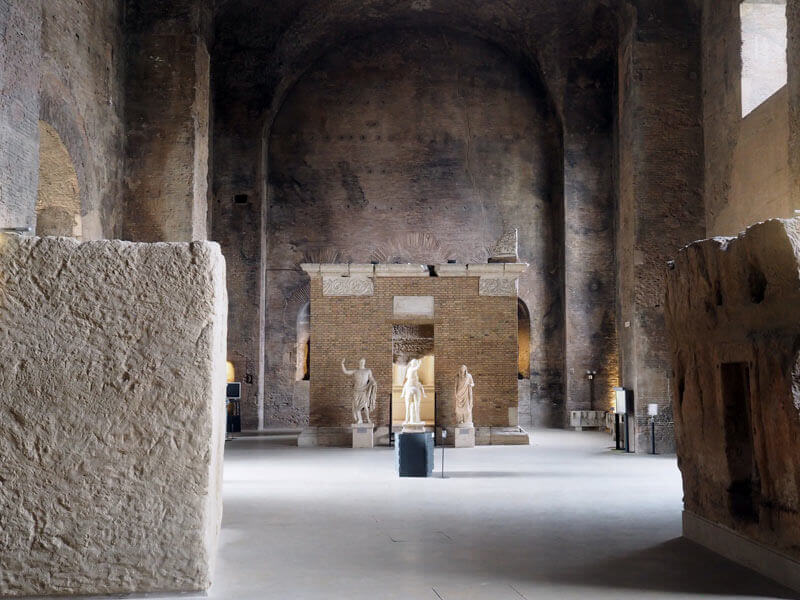
The Baths of Diocletian were once the largest thermal baths in Roman antiquity and also an important social meeting place. Built between 298 and 306 AD, this enormous bathing establishment could have held up to 3,000 Romans simultaneously, according to estimates.
At its peak, around 40,000 slaves are said to have been involved in the construction of these gigantic baths. Thus, the construction project for these baths was reduced to 8 years.
The Baths of Diocletian are well worth a visit, not least because of their phenomenal state of preservation and size. Incidentally, in the 16th century, the Italian prodigy Michelangelo himself renovated the baths.
He integrated the baths into the construction of the church of Santa Maria degli Angeli e dei Martiri. Particularly good: the old thermal baths complex is a real insider tip among the museums in Rome.
The number of visitors here is usually kept within reasonable limits. Especially in midsummer, the shady thermal baths are a pleasant change from the hot tourist hotspots.
Address:
Via delle Terme di Diocleziano, 00185 Roma
Opening hours:
Tuesday – Sunday: 09:00 to 19:30
Mondays: closed
Palazzo Altemps

The impressive 15th-century Palazzo Altemps contains a truly magnificent collection of Roman and Greek sculptures, as well as a few Egyptian exhibits. The courtyard alone is well worth a souvenir photo.
This impressive palazzo was taken over by Cardinal Marco in 1568, whose Sittico Altemps collection also includes the four beautiful sculptures in the courtyard.
On the first floor, you can see the former living quarters of this magnificent residence, which was indeed owned by the Altemps family for a very long time. The ceiling frescoes are stunning.
One floor below, you will find exciting excavations from everyday life. These include ceramic vases, game cubes, bronze oil lamps, various funerary inscriptions, and much more.
Address:
Piazza di Sant’Apollinare, 46, 00186 Roma
Opening hours:
Tuesday – Sunday: 09:00 to 19:45
Mondays: closed
Palazzo Massimo alle Terme
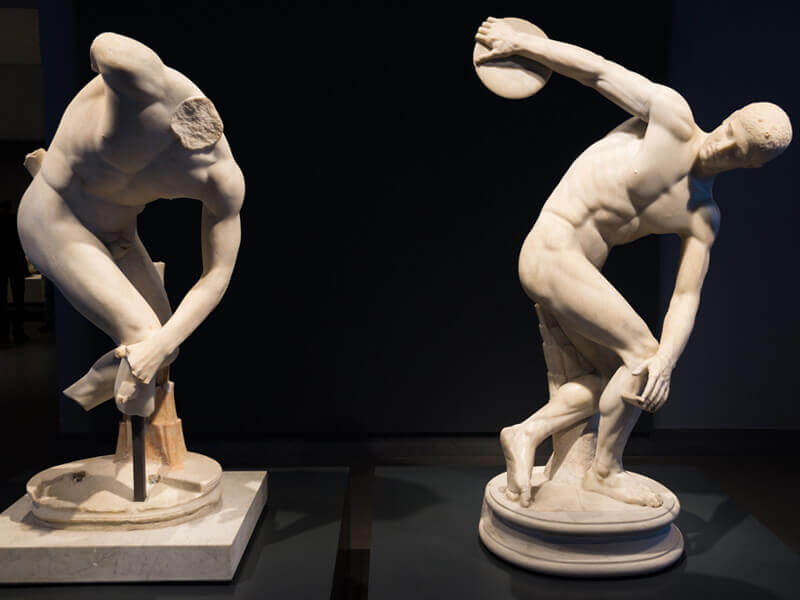
The most popular of the four national museums in Rome is the Palazzo Massimo alle Terme, built between 1883 and 1887. On each of the four floors, you will find different exciting highlights.
These include sculptures of great personalities, such as Emperor Augustus, but also portraits of Greek origin, such as Alexander the Great or Socrates.
On the other hand, the second floor is dedicated exclusively to impressive frescoes, mosaics, and stucco work. Thanks to the many fantastic wall decorations, you can gain an impressive insight into the taste of the Roman aristocracy.
Those who are mainly interested in coin collections will find a huge selection of medals dating back to the 9th century in the museum’s basement. This collection is truly unique in its versatility!
Address:
Largo di Villa Peretti 2, 00185 Roma
Opening hours:
Tuesday – Sunday: 09:00 to 19:45
Mondays: closed
Crypt Balbi
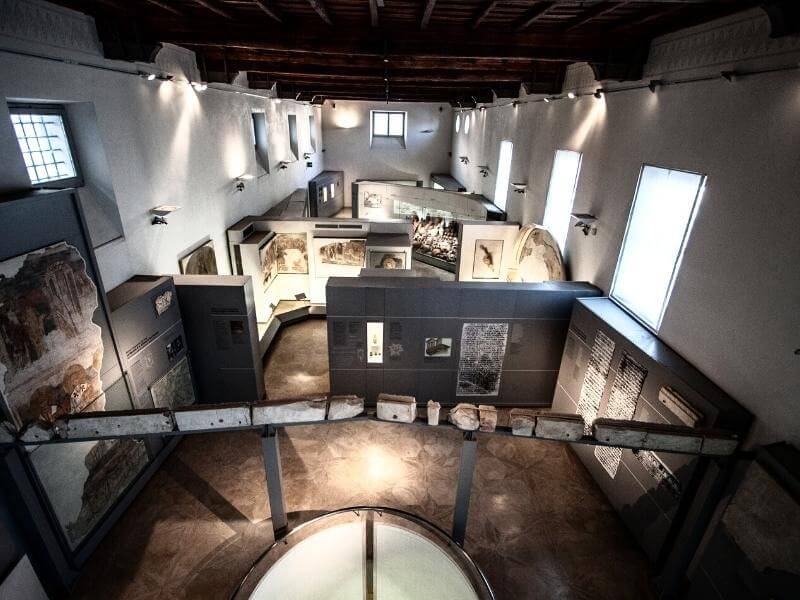
Another tip among Rome’s museums is the Balbi Crypt, which already served as the lounge of the theater of Consul Lucius Cornelio Balbo, built between 19 and 13 BC.
The rooms in the crypt were mainly used during breaks or as shelter from the rain. After the theater fell into oblivion over many years, archaeological excavations began in 1981.
Twenty years later, the crypt was opened to the public for the first time. Today, you can get a good idea of the city’s history here. Parts of the crypt’s travertine and tuff wall are still preserved.
The deep, shady excavations of the crypt Balbi serve as a welcome rest area from the Italian sun, especially on hot summer days.
Address:
Via delle Botteghe Oscure 31, 00186 Rome
Opening hours:
Tuesday – Sunday: 09:00 to 19:45
Mondays: closed
Centrale Montemartini

By far, the most extravagant museum in Rome is Centrale Montemartini, which has its origins in a former power station. This place better reflects Rome than any museum in the city: on one side, antiquity; on the other, modernity.
The exhibition venue, which was used as a replacement during some renovations of the Capitoline Museums in 1997, quickly gained great popularity and interest from visitors. The original experiment was so popular that a permanent exhibition site was created four years later.
Today, among the old industrial machinery, you can find numerous archaeological finds, such as sculptures, mosaics, and more. Anyone who tends to find museums rather boring will definitely be proven wrong here.
Address:
Via Ostiense 106, 00154 Roma
Opening hours:
Tuesday – Sunday: 09:00 to 19:00
Mondays: closed
Galleria Spada
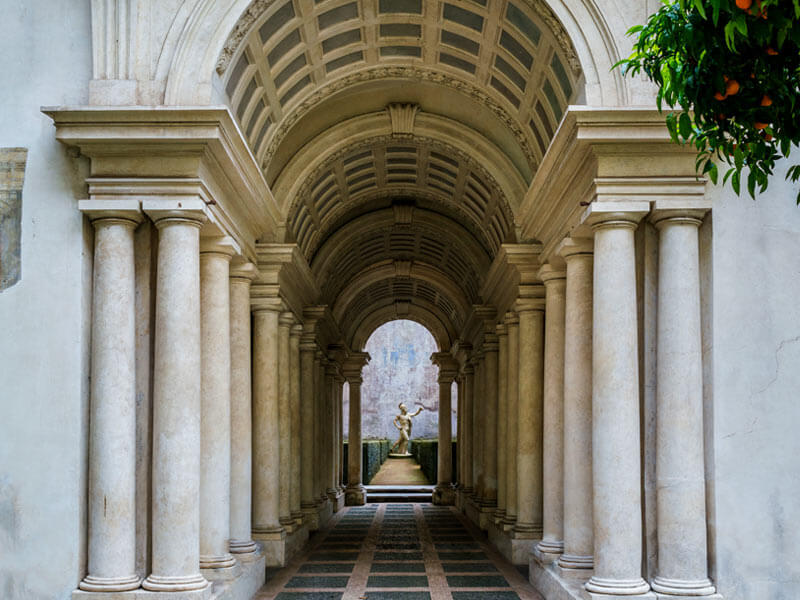
A few meters away from the beautiful Piazza Campo de’ Fiori is the Galleria Spada, a museum with a magnificent collection of 17th-century paintings.
The museum is located in Palazzo Capodiferro, a 16th-century building. The art gallery contains a family collection of the two cardinals, Bernardino and Fabrizio Spada.
However, the absolute highlight is not on a wall but instead in the inner courtyard of the chic building. A colonnade designed in 1653 surprises almost every visitor to the museum with an astonishing optical illusion.
The colonnade, which is only nine meters long, seems almost endless. It is a magnificent example of baroque architecture created for the Cardinal by Francesco Borromini.
Address:
Piazza Capo di Ferro 13, 00186 Roma
Opening hours:
Wednesday – Monday: 08:30 to 19:30
Tuesdays: closed
MAXXI - The National Museum of Arts of the XXI Century

Enough of the strictly symmetrical designs and the vast number of sculptures. Don’t worry—Rome’s museums have much more to offer than artifacts from ancient times.
Those interested in contemporary art and architecture will get their money’s worth at the MAXXI Museum in the northern Flaminio district.
The art museum designed by Zaha Hadid opened in May 2010 on a former military site in Rome and consumed a whopping 150 million euros from the budget.
The Iraqi-British star architect has excitingly integrated the dismal military barracks into the modern, new museum concept. Even from the outside, the huge concrete block leaves a lasting impression.
Inside the MAXXI museum, visitors are guided primarily through very spacious, curved, and sometimes even free-floating elements. In addition to exciting exhibitions, there are concerts, workshops, and other events here.
Address:
Via Guido Reni, 00196 Roma
Opening hours:
Tuesday – Sunday: 11:00 to 19:00
Mondays: closed
Trajan's Markets - Museum of the Imperial Forums
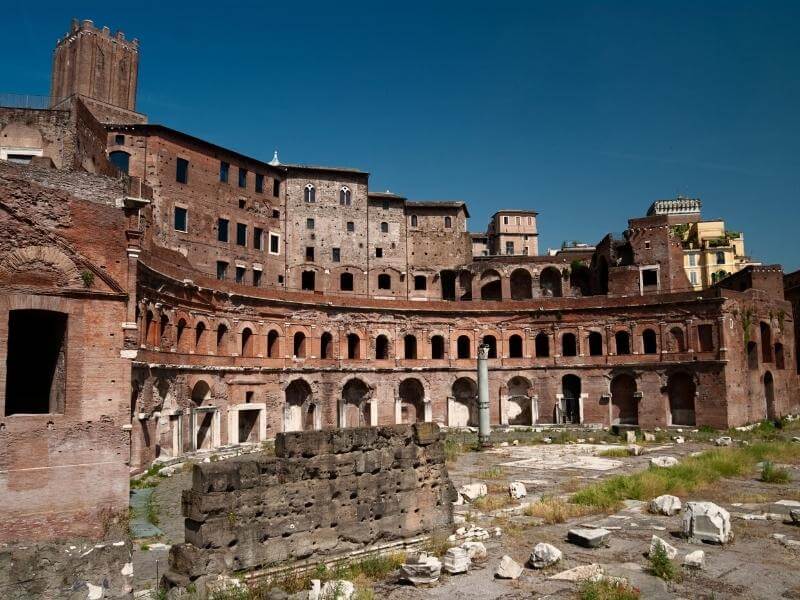
The semi-circular building complex in the adjacent photo was part of Trajan’s Markets, the Mercati di Traiano. Built during Emperor Trajan’s reign from 107 to 110 AD, the markets, with around 150 stores, were an important trading center in antiquity.
Small stores, storage rooms, and offices were mainly located here. All kinds of goods, including spices, wine, and oil, were traded within the floors. Over time, the markets of Trajan changed their function several times.
For example, the square tower in the background was rebuilt several times in the Middle Ages. From this time onwards, Trajan’s Markets was mainly used as a fortress, barracks, and monastery.
The Imperial Forums Museum has been open to visitors to the Eternal City since 2007. Inside, you can follow the exciting development of this square in detail. Numerous information boards, videos, and audio recordings tell the story of the Imperial Forums.
Address:
Via Quattro Novembre 94, 00187 Roma
Opening hours:
Monday – Sunday: 09:30 to 19:30
GNAM - Galleria Nazionale d'Arte Moderna
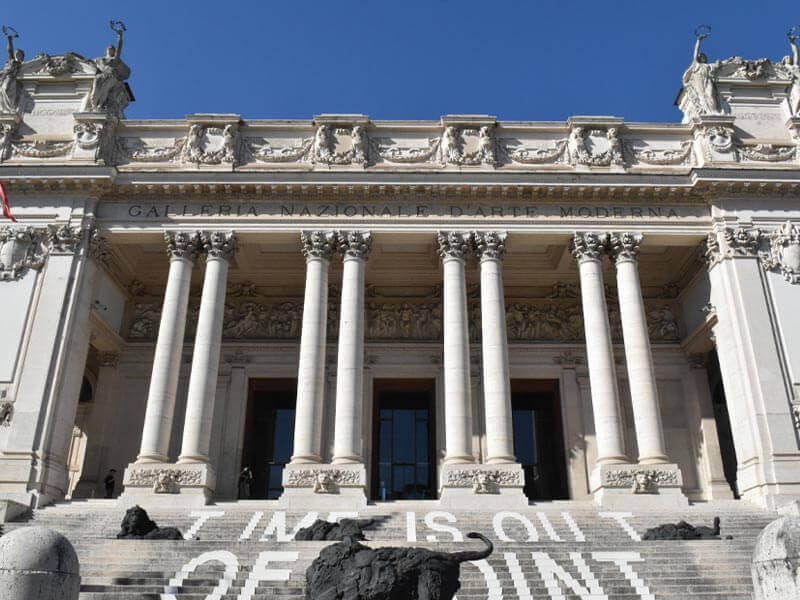
With so many antique highlights in Rome, you could be forgiven for thinking that there is no place for contemporary art. But you’d be wrong. The art museum is Galleria Nazionale d Arte Moderna, an impressive address in Rome.
The curators of this museum welcome you with around 20,000 paintings, sculptures, and installations from the 19th to 21st centuries. The spacious, bright halls of the GNAM Museum are home to famous works by great artists.
These include works by Vincent van Gogh, Picasso, Giorgio de Chirico, Gustav Klimt, Henry Moore, and many more. Particularly practical: the fantastic Galleria Borghese exhibition is just a stone’s throw away.
If you take a 20-minute walk from here through the green park of Villa Borghese, you will find yourself in front of the chic former country house.
Get Tickets
Address:
Viale delle Belle Arti 131, 00197 Roma
Opening hours:
Tuesday – Sunday: 08:30 to 19:30
Mondays: closed
Galleria Doria Pamphilj
A fantastic insider tip among the museums in Rome is the private art collection of the Galleria Doria Pamphilj on Via del Corso.
This exhibition emblematically displays the incredible possessions of the Roman nobility. Even inexperienced museum visitors’ jaws will drop when they visit the gallery.
Here, you can marvel at gold-decorated, silk-wallpapered halls full of splendor and opulence. The private collection of the Doria family is divided into a total of 10 rooms, as well as a ballroom.
Highlights of the collection include famous works by Raphael, Caravaggio, Lorenzo Lotto, Parmigianino, Jacopo Bassano, and many more. In total, the private gallery comprises over 400 different paintings from the 15th to 18th centuries.
Address:
Via del Corso 305, 00186 Roma
Opening hours:
Monday – Thursday: 09:00 to 19:00
Friday – Sunday: 10:00 to 20:00
Palazzo Barberini

Palazzo Barberini is located on the northern slope of Quirinal Hill, one of Rome’s seven hills. This is a real insider tip among Rome’s museums, and it brings together some magnificent works of art from the Galleria Nazionale d’Arte Antica and the Italian Institute of Numismatics.
The most striking feature of this beautiful baroque palace is the countless bees that can be found throughout the building. What are all the bees doing here? Well – bees were part of the coat of arms of Pope Urban VIII!
He even had a “bee fountain” made for him in 1644 by the famous Italian sculptor Gian Lorenzo Bernini. This is one of the most spectacular fountains in Rome.
One of the highlights of this museum is the breathtaking 17th-century ceiling fresco, which bears the name “Allegory of Divine Providence.” It was designed by Pietro da Cortana. You will also find impressive works by Caravaggio and Filippo Lippi.
Address:
Via delle Quattro Fontane 13, 00184 Roma
Opening hours:
Tuesday – Sunday: 10:00 to 18:00
Mondays: closed
Palazzo Farnese
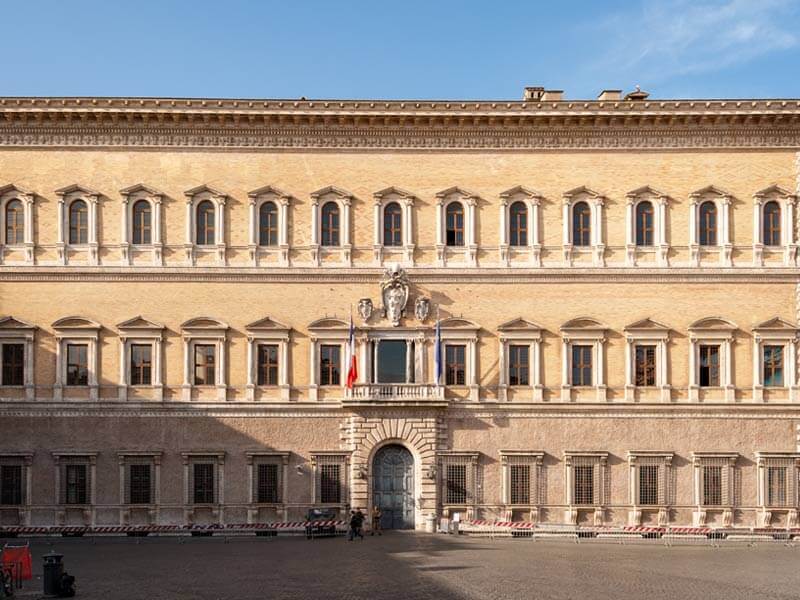
The beautiful Palazzo Farnese is one of the few sights in Rome that is not so easy to visit. The reason for this is the French embassy that resides here.
Several architects and builders were involved in the development of the palazzo. Antonio Sangallo began designing this magnificent Renaissance palace in 1514.
Later, the famous Michelangelo was in charge until the project was finally completed by Giacomo della Porta.
Visits are, therefore, only available in combination with a guided tour, which is currently only offered in English, Italian, and French. You should definitely book a few weeks in advance.
Address:
Piazza Farnese 67, 00186 Roma
Opening hours:
Mondays: 15:00 – 16:00
Tuesdays: closed
Wednesday – Thursday: 15:00 to 16:00
Friday – Sunday: closed
Museo di Roma - Palazzo Braschi
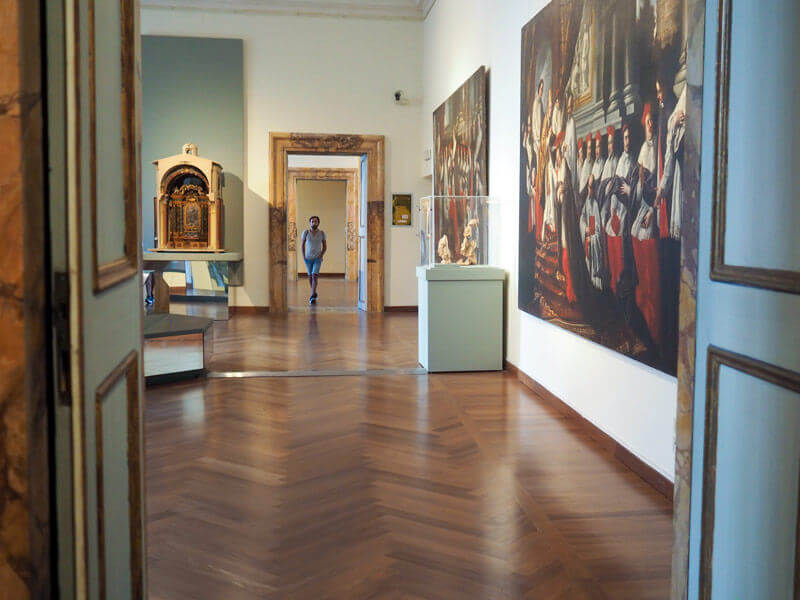
The next art museum on our list of museum tips is the Museo di Roma, which is located next to the picturesque Piazza Navona.
The museum is located in Palazzo Braschi and documents the local history of Rome from the Middle Ages to the present day. Thanks to some generous donations, the museum now has a considerable collection.
These include around 5000 drawings, illustrated books, paintings and sculptures, furniture, and several engravings.
Artists such as Antonio Canova, Pompeo Batoni, and Nicola Salvi, who were partly responsible for the design of the famous Trevi Fountain, are particularly well represented.
Address:
Piazza di San Pantaleo, 10, Piazza Navona, 2, 00186 Roma
Opening hours:
Tuesday – Sunday: 10:00 to 19:00
Mondays: closed
Palazzo Venezia
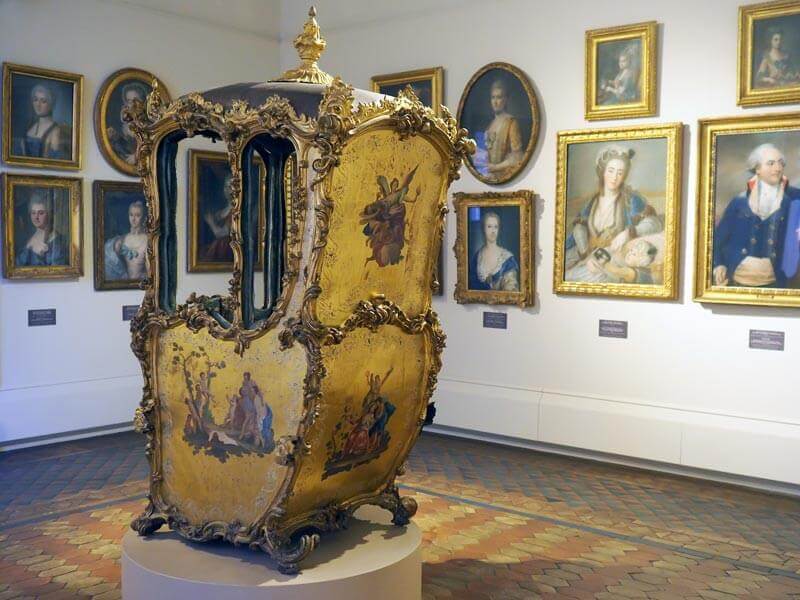
Palazzo Venezia, a Renaissance building from the 15th century, is located in the heart of Rome. It once served as the residence of Pope Paul II (1464-1471) and, years later, as the embassy of the Republic of Venice.
In fact, like so many historic buildings in Rome, this palace changed hands several times. At one point, it was in the hands of Austria, then France took over, and in the meantime, it was even the seat of Benito Mussolini’s government.
Since 1921, the Palazzo Venezia on the Piazza Venezia of the same name has served as a museum of applied arts. To this day, some parts of the exhibition still come from Castel Sant’Angelo.
The museum’s collection includes impressive Renaissance paintings, a selection of fabrics and tapestries, multicolored wooden sculptures, and an arsenal of armor and other ancient weapons.
Address:
Via del Plebiscito, 118, 00186 Roma
Opening hours:
Monday – Sunday: 09:30 to 18:30
Other exciting museums in Rome:
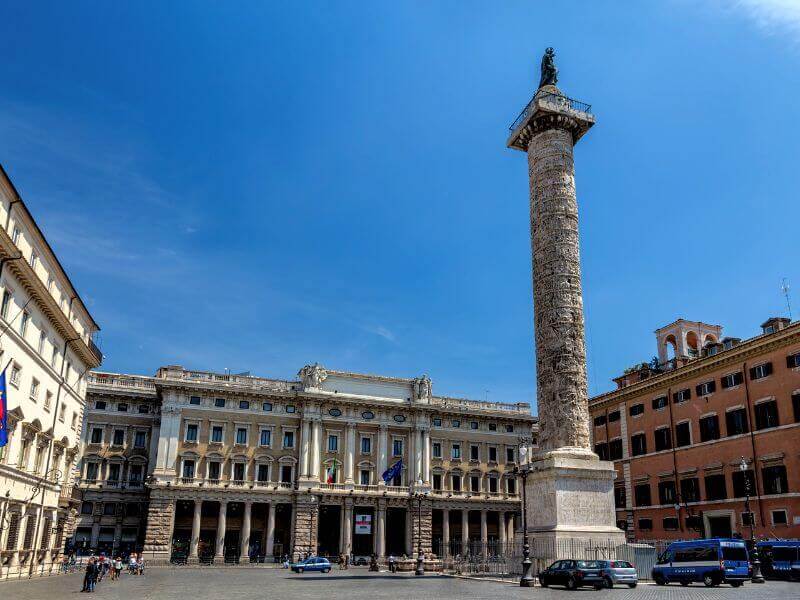
Palazzo Colonna

Museo dell Ara Pacis

Leonardo Da Vinci Museum Rom
Locations of the museums we recommend in Rome
On the map, you can see where each museum is located. Click on one of the symbols to find out which museum it is.

Editor: Allie Hartmann
Hey and welcome to Rome-Tourist!
My name is Allie and I travel regularly to Rome, Italy.
On our Rome blog you will get valuable travel tips!
You may also be interested in these articles:
